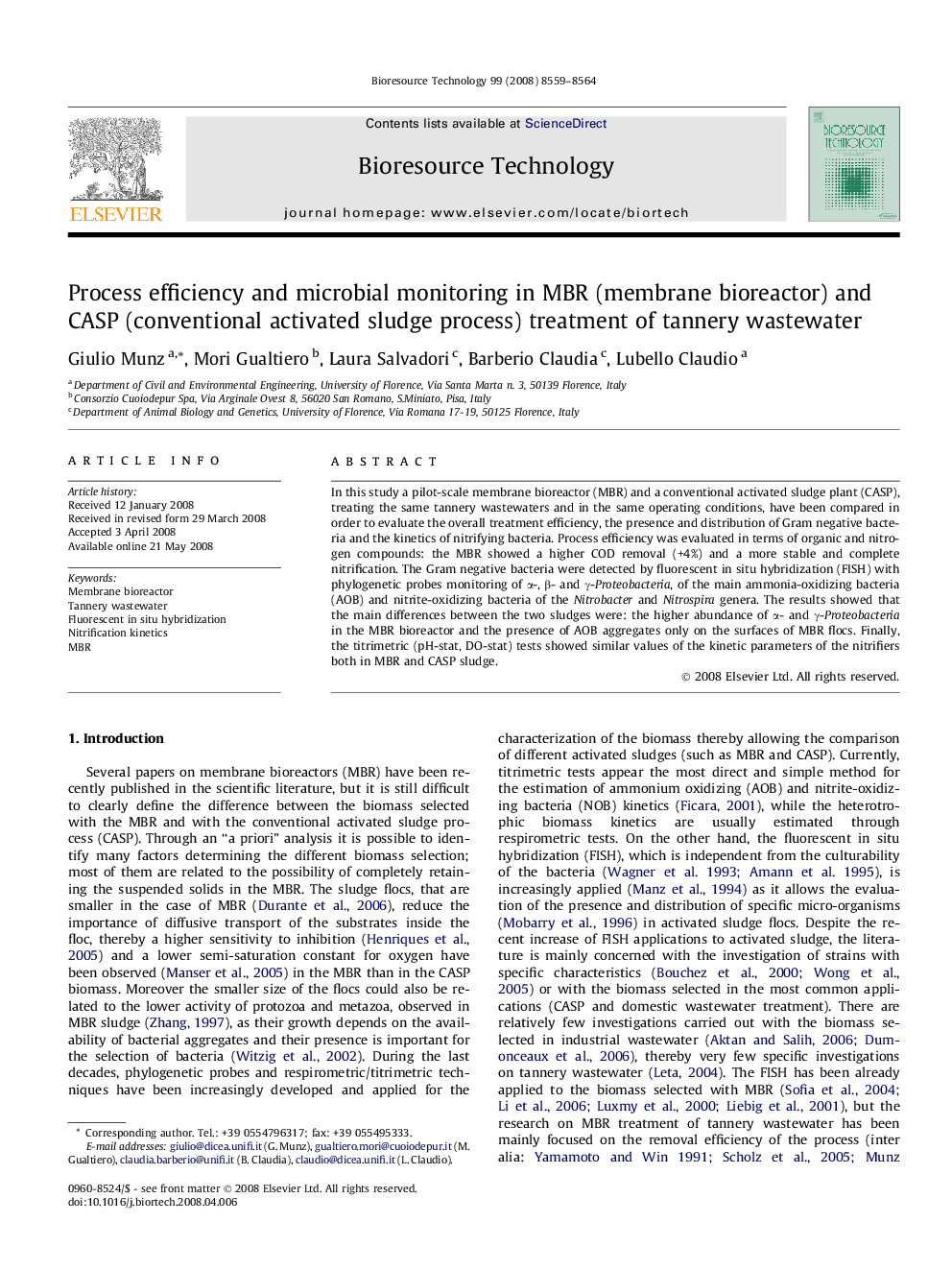| Article ID | Journal | Published Year | Pages | File Type |
|---|---|---|---|---|
| 684745 | Bioresource Technology | 2008 | 6 Pages |
In this study a pilot-scale membrane bioreactor (MBR) and a conventional activated sludge plant (CASP), treating the same tannery wastewaters and in the same operating conditions, have been compared in order to evaluate the overall treatment efficiency, the presence and distribution of Gram negative bacteria and the kinetics of nitrifying bacteria. Process efficiency was evaluated in terms of organic and nitrogen compounds: the MBR showed a higher COD removal (+4%) and a more stable and complete nitrification. The Gram negative bacteria were detected by fluorescent in situ hybridization (FISH) with phylogenetic probes monitoring of α-, β- and γ-Proteobacteria, of the main ammonia-oxidizing bacteria (AOB) and nitrite-oxidizing bacteria of the Nitrobacter and Nitrospira genera. The results showed that the main differences between the two sludges were: the higher abundance of α- and γ-Proteobacteria in the MBR bioreactor and the presence of AOB aggregates only on the surfaces of MBR flocs. Finally, the titrimetric (pH-stat, DO-stat) tests showed similar values of the kinetic parameters of the nitrifiers both in MBR and CASP sludge.
